Engineers test printed electronics in space
Wednesday, 26 July 2023 17:23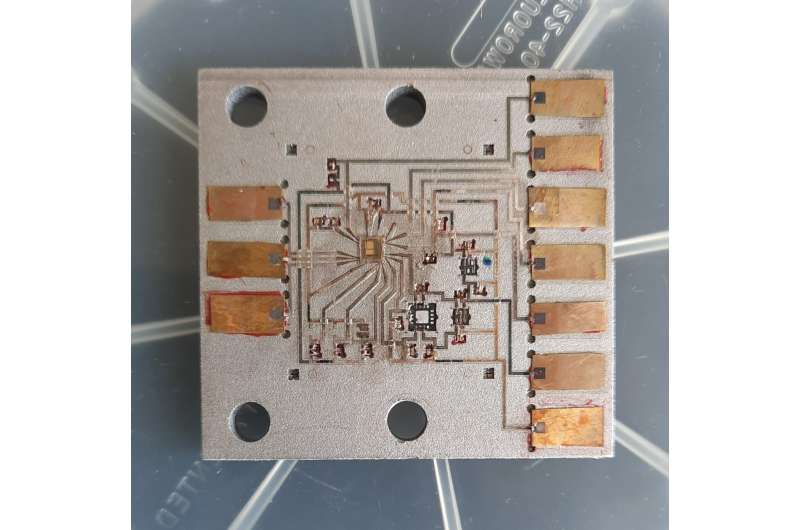
Today's small spacecraft pack sensors, guidance and control, and operating electronics into every available space. Printing electronic circuits on the walls and structures of spacecraft could help future missions do more in smaller packages.
Engineers successfully tested hybrid printed circuits at the edge of space in an April 25 sounding rocket flight from NASA's Wallops Flight Facility near Chincoteague, Virginia. Electronic temperature and humidity sensors printed onto the payload bay door and onto two attached panels monitored the entire SubTEC-9 sounding rocket mission, recording data that was beamed to the ground.
The amazing new materials that hold the key to new space discoveries
Wednesday, 26 July 2023 17:22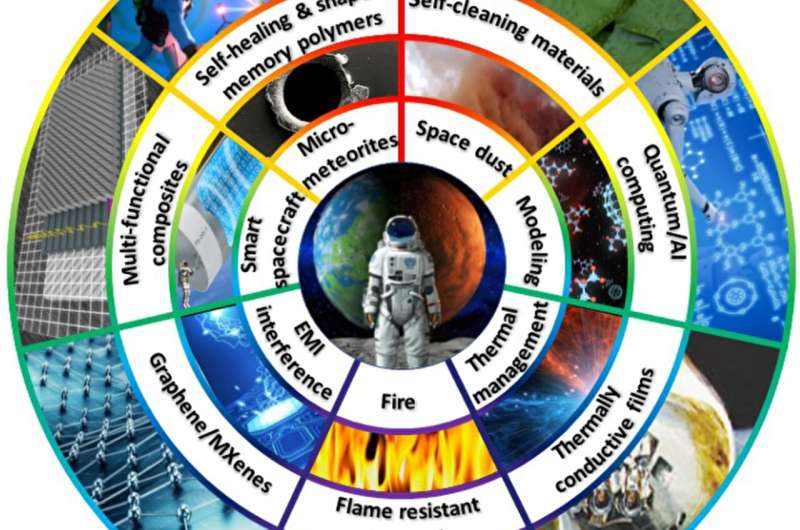
Space is a dangerous place. From micro-meteorites and electromagnetic interference to fires in space and extreme heat and cold, we need to develop new materials to enable the next generation of space travel and intergalactic travel.
New Swinburne research published in Advanced Composites and Hybrid Materials highlights the cutting-edge materials that are solving these problems, including those being developed by Swinburne's Multifunctional Materials and Composites team.
These include self-healing polymers, fire and thermally resistant materials, materials for thermal management, self-cleaning materials, EMI shielding materials and multifunctional carbon fiber composites.
Lead author and Swinburne Engineering Senior Lecturer Dr.
Boeing records more losses from Starliner delays
Wednesday, 26 July 2023 15:35
Boeing took another loss on its CST-100 Starliner commercial crew program as the first crewed flight of that vehicle remains in limbo.
Crew-7: crew news conference
Wednesday, 26 July 2023 14:02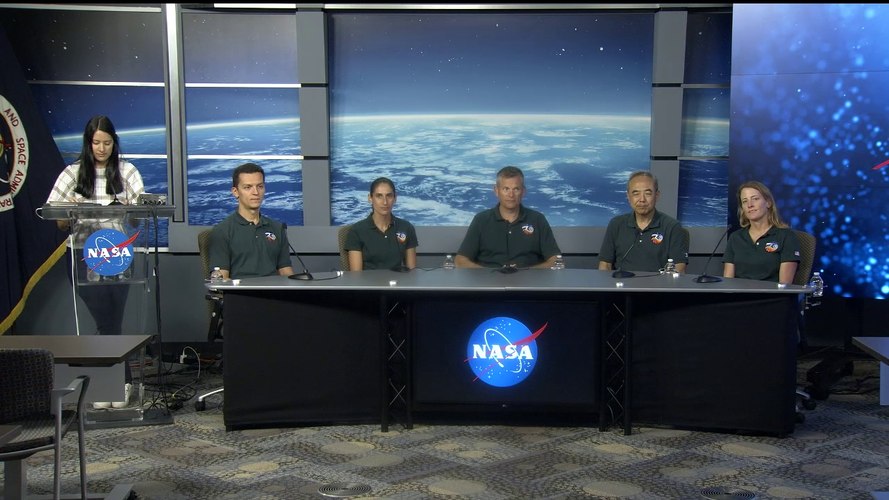 Video:
00:46:24
Video:
00:46:24
On Tuesday 25 July, the four crew members of Crew-7, Jasmin Moghbeli (NASA), Andreas Mogensen (ESA), Satoshi Furukawa (JAXA) and Konstantin Borisov (Roscosmos) hosted a news conference where they talk about their upcoming mission to the International Space Station.
Webb snaps detailed infrared image of actively forming stars
Wednesday, 26 July 2023 13:00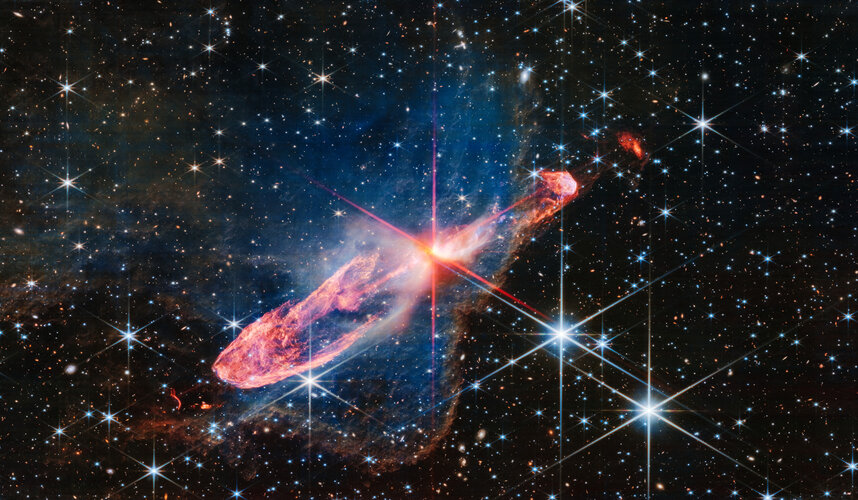 Image:
Webb snaps detailed infrared image of actively forming stars
Image:
Webb snaps detailed infrared image of actively forming stars Aeolus reentry: the breakdown
Wednesday, 26 July 2023 12:20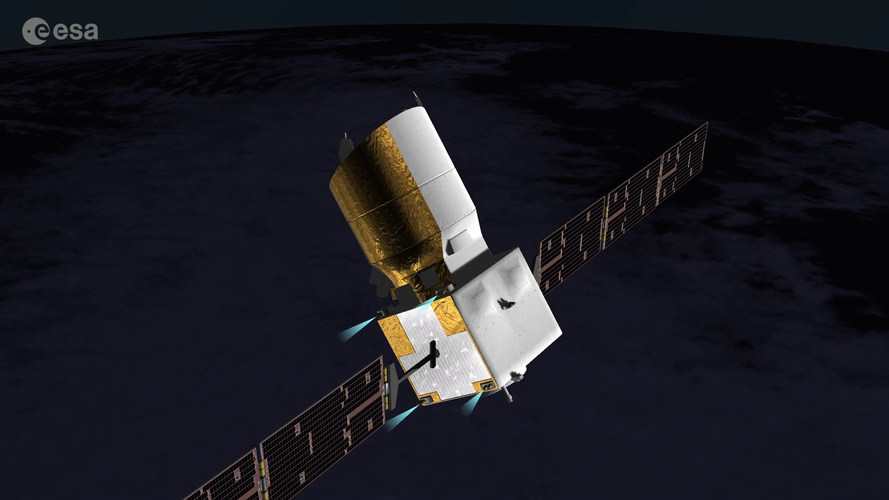 Video:
00:02:42
Video:
00:02:42
After a remarkable life in orbit, Aeolus is out of fuel and out of time – it’s returning to Earth this week. Planned and built before any regulations were put in place on ‘end-of-life’ disposal, the Earth Explorer was designed to naturally return through our atmosphere.
After months of detailed planning and analysis, ESA together with industrial partners has designed a complex and never-before-performed set of manoeuvres to control, as much as possible, Aeolus’ fall.
The assisted reentry attempt is built on four main phases, now begun at ESA’s mission control:
- Phase I: once Aeolus has fallen
Geophysics student employs 800-year-old method for Lunar GPS system
Wednesday, 26 July 2023 10:28 A student of geophysics at the Faculty of Science of Eotvos Lorand University (ELTE), Kamilla Cziraki, in collaboration with Professor Gabor Timar, head of the Department of Geophysics and Space Sciences, has given an innovative spin to the study of navigation systems that might be utilized on the Moon's surface for future explorations.
The team applied a method based on the mathematical p
A student of geophysics at the Faculty of Science of Eotvos Lorand University (ELTE), Kamilla Cziraki, in collaboration with Professor Gabor Timar, head of the Department of Geophysics and Space Sciences, has given an innovative spin to the study of navigation systems that might be utilized on the Moon's surface for future explorations.
The team applied a method based on the mathematical p Gilmour Space Technologies to accelerate design and manufacturing with Siemens Xcelerator
Wednesday, 26 July 2023 10:28 Siemens Digital Industries Software has announced that Gilmour Space Technologies,and Australian launch vehicle satellite platform developer, has adopted the Siemens Xcelerator portfolio of industry software to help accelerate its design and manufacturing processes across its facilities in Queensland, Australia.
Siemens Digital Industries Software's consultancy and implementation partner P
Siemens Digital Industries Software has announced that Gilmour Space Technologies,and Australian launch vehicle satellite platform developer, has adopted the Siemens Xcelerator portfolio of industry software to help accelerate its design and manufacturing processes across its facilities in Queensland, Australia.
Siemens Digital Industries Software's consultancy and implementation partner P Unveiling Mars' Past: Olympus Mons as a Gigantic Volcanic Isle
Wednesday, 26 July 2023 10:28 Is it possible that Olympus Mons, the largest volcano in our solar system, was once a behemoth volcanic island on Mars, equivalent in size to the nation of France? According to the latest research led by a CNRS scientist, this could indeed have been the reality of the Martian landscape at some point in its geologic past. The work, which was published in the Earth and Planetary Science Letters jo
Is it possible that Olympus Mons, the largest volcano in our solar system, was once a behemoth volcanic island on Mars, equivalent in size to the nation of France? According to the latest research led by a CNRS scientist, this could indeed have been the reality of the Martian landscape at some point in its geologic past. The work, which was published in the Earth and Planetary Science Letters jo NASA lab hopes to find life's building blocks in asteroid sample
Wednesday, 26 July 2023 10:28 Eager scientists and a gleaming lab awaits.
A sample from the asteroid Bennu, which could be key to understanding the formation of the solar system and our own planet, is set to be analyzed at NASA's Johnson Space Center in Houston after it reaches Earth in late September.
The precious cargo is currently aboard OSIRIS-REx, a US space probe launched in 2016 to Bennu, which orbits the Sun
Eager scientists and a gleaming lab awaits.
A sample from the asteroid Bennu, which could be key to understanding the formation of the solar system and our own planet, is set to be analyzed at NASA's Johnson Space Center in Houston after it reaches Earth in late September.
The precious cargo is currently aboard OSIRIS-REx, a US space probe launched in 2016 to Bennu, which orbits the Sun China's GalaxySpace Debuts Revolutionary Flexible Solar Wing Satellite
Wednesday, 26 July 2023 10:28 China's commercial space company, GalaxySpace, has successfully embarked on a new chapter in the nation's space endeavours, launching the Lingxi-03 satellite from a Long March-2D rocket this past Sunday.
In a noteworthy first, the Lingxi-03 satellite is furnished with a flexible solar wing, a unique design for the nation. The solar panel, a single-layered structure, is impressively thin at
China's commercial space company, GalaxySpace, has successfully embarked on a new chapter in the nation's space endeavours, launching the Lingxi-03 satellite from a Long March-2D rocket this past Sunday.
In a noteworthy first, the Lingxi-03 satellite is furnished with a flexible solar wing, a unique design for the nation. The solar panel, a single-layered structure, is impressively thin at PlanetiQ Commences Daily Deliveries of High-Quality GNSS-RO Data to NOAA
Wednesday, 26 July 2023 10:28 Weather forecasting and climate research stand on the threshold of a new era as PlanetiQ, a forerunner in global atmospheric observation systems, kicks off daily deliveries of its top-grade Signal to Noise Ratio (SNR) GNSS-Radio Occultation (GNSS-RO) data to the National Oceanic and Atmospheric Administration (NOAA). In a forward-looking move, NOAA has committed $59.6 million over the next five
Weather forecasting and climate research stand on the threshold of a new era as PlanetiQ, a forerunner in global atmospheric observation systems, kicks off daily deliveries of its top-grade Signal to Noise Ratio (SNR) GNSS-Radio Occultation (GNSS-RO) data to the National Oceanic and Atmospheric Administration (NOAA). In a forward-looking move, NOAA has committed $59.6 million over the next five Successful entry into service of the multi-mission EUTELSAT 10B satellite
Wednesday, 26 July 2023 10:28 Eutelsat Communications (Euronext Paris: ETL) reports that its newest venture, the multi-mission high-capacity EUTELSAT 10B satellite, has entered service successfully at the 10 East orbital position. This achievement demonstrates Eutelsat's continuous effort to meet the growing demand for mobile connectivity.
The EUTELSAT 10B's dual High-Throughput Satellite (HTS) Ku-band payloads promise
Eutelsat Communications (Euronext Paris: ETL) reports that its newest venture, the multi-mission high-capacity EUTELSAT 10B satellite, has entered service successfully at the 10 East orbital position. This achievement demonstrates Eutelsat's continuous effort to meet the growing demand for mobile connectivity.
The EUTELSAT 10B's dual High-Throughput Satellite (HTS) Ku-band payloads promise Airbus and Astrocast extend collaboration for satellite IoT
Wednesday, 26 July 2023 10:28 Airbus Defence and Space, the renowned aerospace industry leader, and Astrocast, the prominent satellite IoT operator, recently announced an extension of their partnership aimed at further developing and enhancing satellite Internet of Things (SatIoT) technology. This alliance will empower Astrocast to heighten its network capacity and offer reliable and affordable SatIoT solutions to its client
Airbus Defence and Space, the renowned aerospace industry leader, and Astrocast, the prominent satellite IoT operator, recently announced an extension of their partnership aimed at further developing and enhancing satellite Internet of Things (SatIoT) technology. This alliance will empower Astrocast to heighten its network capacity and offer reliable and affordable SatIoT solutions to its client Italian technology innovates rail worker safety with StreamEXO Exoskeleton
Wednesday, 26 July 2023 10:28 In a groundbreaking move towards industrial worker safety, the Italian Institute of Technology (IIT) has launched the StreamEXO exoskeleton, a wearable device designed to protect railway maintenance workers from physical overload. Following a successful 6-month test campaign involving 15 individuals in Italy, the prototype's results were impressive, showing a 50% decrease in ergonomic risk and a
In a groundbreaking move towards industrial worker safety, the Italian Institute of Technology (IIT) has launched the StreamEXO exoskeleton, a wearable device designed to protect railway maintenance workers from physical overload. Following a successful 6-month test campaign involving 15 individuals in Italy, the prototype's results were impressive, showing a 50% decrease in ergonomic risk and a 
